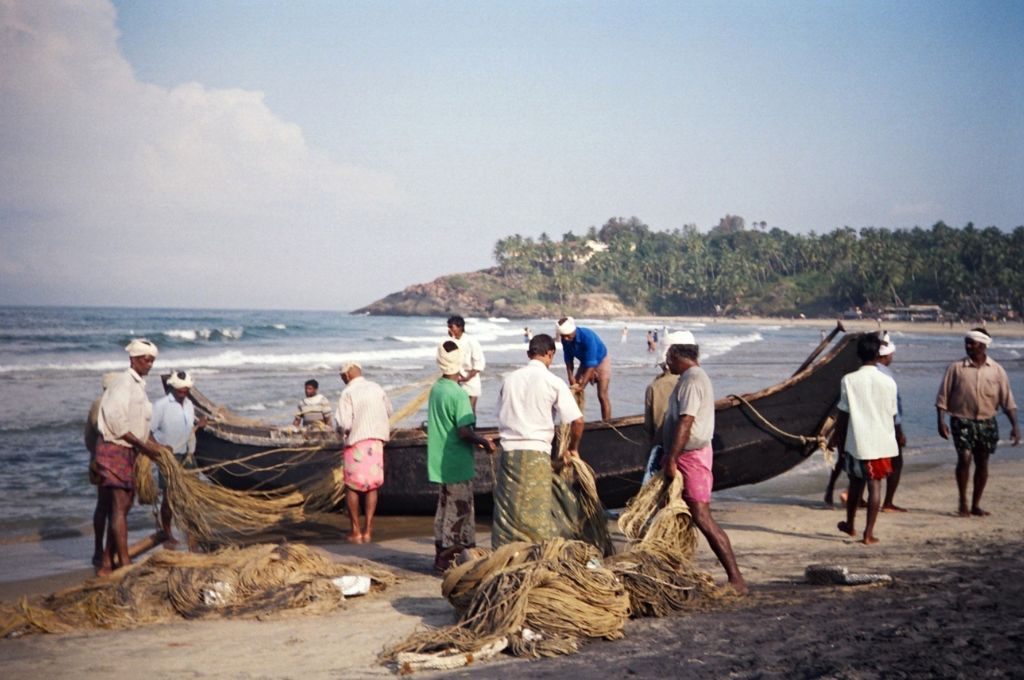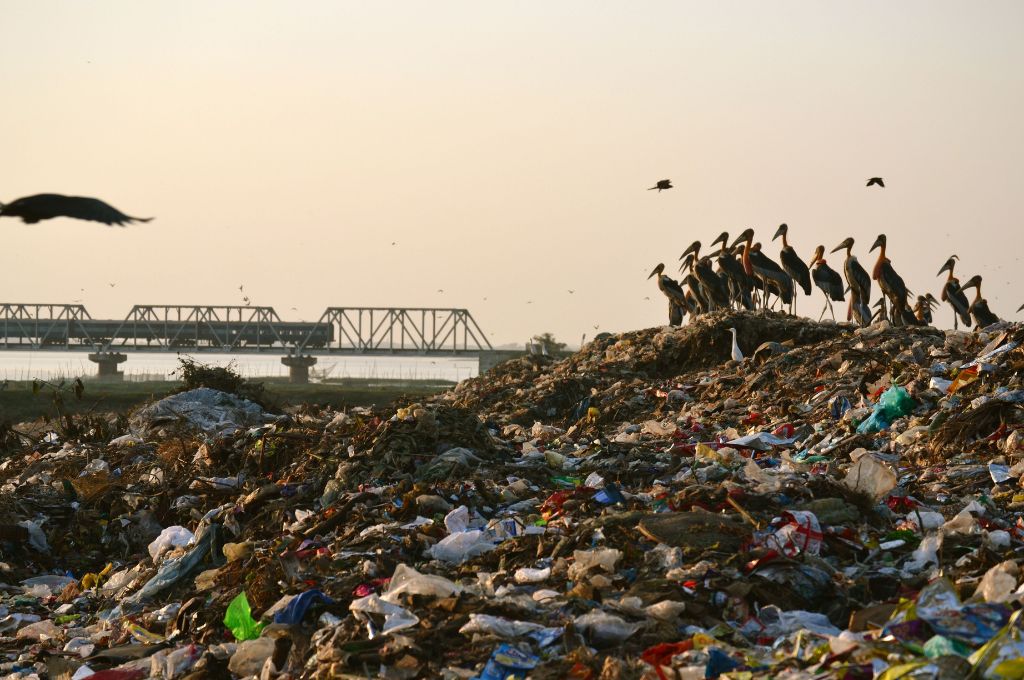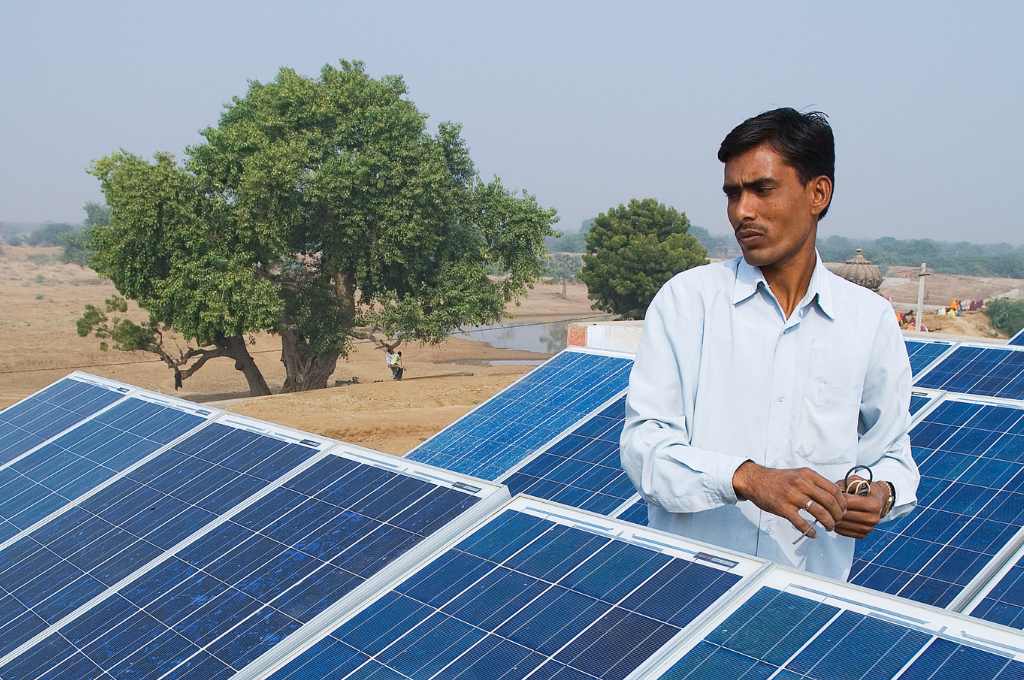People and institutions often respond to the climate crisis by breaking down the problem (and hence the solutions) into silos and dividing them into two large, isolated buckets: mitigation and adaptation.
Climate change mitigation refers to efforts to reduce or prevent emission of greenhouse gases (GHG). Mitigation can mean using new technologies and renewable energies, making older equipment more energy efficient, or changing management practices or consumer behaviour such that the resultant emissions are reduced or avoided.
Adaptation, on the other hand, refers to the process of adjusting to current or expected effects of climate change, preferably in a way that improves the state of the environment and human well-being. It means altering our behaviour, systems, and practices of life to protect our families, our economies, and the environment in which we live from the impacts of climate change.
However, the problem of climate change doesn’t lend itself well to this silo-ed thinking—and neither do its solutions. Climate adaptation strategies cannot be developed without thinking about their impact on climate mitigation efforts—the ways in which people adapt are likely to impact carbon sequestration or emissions. Similarly, action on mitigation may impact people’s lives and livelihoods, which determines their ability to adapt to climate and weather changes.
Mitigation and adaptation: The trade-offs
We have seen this two-way impact play out on multiple occasions. During one of our interactions with nonprofits working on the ground, for instance, we were told about the large plantations that were coming up on so-called degraded landscapes in order to increase tree cover and carbon sequestration. But those landscapes were, in fact, commons—public lands that are used by everyone in the community, and usually for sustenance by the most vulnerable members. At times, they also contain a substantial amount of biodiversity and wildlife species, including keystone species, wild food, fruits, and a variety of vegetation, which are key in determining the ability of the existing vegetation to sequester carbon.

Replacing these common lands with mono-plantations, therefore, would lead to a loss of diverse ecosystem resources such as fodder, fruit, and water provisioning, which are of immense value to communities. In turn, it might also lead to a loss of existing livelihoods. This reduction in income and resources will ultimately reduce the communities’ ability to adapt, since they will no longer have the financial wherewithal or access to natural resources to cope with any climate or income shocks. In essence, their adaptive capacity to climate change could actually become worse because of mitigation actions. The loss of biodiversity will also result in some loss of sequestration.
A similar problem can be seen in the case of large green infrastructure projects that aim to mitigate the effects of climate change. This includes the large-scale deployment of renewable energy plants, which often involves using vast swathes of commons or grasslands that are natural resources for people living on or around them. If careful attention is not paid to such trade-offs between mitigation and adaptation, it could lead to erosion of resources and livelihood critical for people to cope with climate change.
It’s fairly clear that this singular focus on mitigation will only exacerbate the climate crisis. But how did we get here?
1. The outsized focus on mitigation is linked to history
One of the first articles that talked about the linkages between carbon dioxide and the earth’s temperature was published more than a hundred years ago in 1896. It stated that burning fossil fuels might lead to an increase in carbon emissions, which could potentially cause changes in weather and lead to the heating up of the planet or global warming.
Since then, the science of climate change has continued to advance our understanding of this linkage and the sources of these emissions as well as the means to reduce them. This has evolved into geopolitical debates on which country should take the most responsibility for reducing emissions and why. The friction between countries has further led to a fractured discourse on finding consensus on emission targets and a fixation on the singular goal of mitigation, leaving out other aspects of climate change such as adaptation and building resilience. However, over the past 30 years of global negotiations, we have fallen way behind in realising even the desired reduction in emissions. The shortfall in achieving global mitigation goals also means that the degree of adaptation needed now will likely be higher than previously thought. This increases the importance that adaptation should be given in climate action and deliberation at all levels.
2. What gets measured gets managed
The relative ease of measuring GHG emissions has made it the most popular choice for shaping climate actions. This is a result of our deep-seated belief that what can be measured can be managed. We can track and monitor the changes in emissions, create an inventory of GHG emissions in different sectors (emissions from infrastructure, oil refineries, etc.), and then create targets for reduction.
The same is not true for adaptation. We can make an inventory of what has worked in adaptation but we cannot quantify all its elements, and so we cannot set quantified targets and then track them the same way we can for mitigation. All this makes adaptation more difficult to measure. But is the flaw in the nature of how adaptation happens or in our fixation with the idea of a standardised means of measurement?
3. Assuming one size fits all
Traditionally, models that work in the Global North have been replicated in emerging markets including technology such as complex infrastructure projects and large-scale dams. This replication is also seen in mitigation-relevant technology such as energy-efficient lighting, state-of-the-art ultra-supercritical power plants, large-scale energy storage systems, and super magnets for wind power. All these lie in the domain of industrial engineering, which lends itself well to replication and scale-up.
Mitigation efforts have to be localised and need to be tailored to local needs.
This approach relies on codifying ‘best practices’ and trying to make the same things work in all places while expecting similar outcomes. However, to some extent, this can be counterproductive in the climate change space, specifically when it comes to adaptation, which is a highly local process. How each local community adapts to adverse climate conditions can differ according to their social, political, geographical, and economic contexts. For example, people living near the coast may experience and adapt to climate change differently from those living in mountainous areas. Scaling up adaptation solutions requires appreciation for a diversity of responses that might work differently for different people at different places. This may not carry the ease of technology replication.
Another point to note is that, in many cases, even mitigation efforts have to be localised and need to be tailored to local needs. For instance, in an effort to transition to more renewable energy sources, the approach of deploying large solar farms everywhere may not be the best solution. There are different forms of deploying solar—for example, distributed solar and micro grids. So even something as universal as solar has to be thought about differently. And the questions that then need to be asked include: Is this mode of deployment relevant? Is it hampering adaptive capacity locally?
4. Communities do not have the luxury to think of mitigation
People vulnerable to climate change are fixing the problem as and when it occurs. They are constantly in coping mode. When the crisis hits them, they seek to fix it. As more problems arise, they will continue to fix them as long as they can. And when they cannot, they either migrate or change what they do. Some will sell their land, some their livestock. Others will take up local jobs in local resorts, move to low-paying tourism jobs, set up small shops in neighbouring villages, and manage to stay afloat. People who have resources or are connected to markets take the lead in transitioning since it’s easier for them to do so compared to their peers.
Therefore, when thinking about climate solutions, we need to view mitigation and adaptation as two sides of the same coin.
Mitigation and adaptation must be seen in a continuum
While adaptation may not be easily measurable or replicable, it is crucial for our survival. Therefore, mitigation and adaptation must be seen in a continuum. To be able to do this, we need to use and understand interplays between mitigation and adaptation, and estimate both their positive and negative as well as short-term and long-term outcomes.
Mitigation actions, for instance, should be viewed from the lens of what positive side effects they could create for adaptation, and if these can be mainstreamed. For instance, the idea of passive cooling or heating is an example of reducing emissions while also giving the adaptive capacity to people to cope with climate extremes. Similarly, growing trees for sequestering carbon can be done at the household or farm level instead of as mass plantations. These trees then become fuelwood sources for the households, thereby eliminating the need for chopping down mature forest trees. Other interventions that focus on adaptation while indirectly enhancing mitigation should also be pursued. This could mean adopting solutions that are less resource-intensive or those that increase natural sequestration, such as nature-based solutions.
Development interventions can also create outcomes that enhance climate action. These are referred to as serendipitous adaptation. One such case we came across in our work was that of a grain bank set up by an environmental agency in a village. This was done to reduce the extent of wildlife being hunted during times of food shortage. This grain bank incidentally also helped the village achieve food security and better cope with climate change–induced effects.
Moving towards just transitions
When devising climate solutions, one needs to be cognizant of the fact that our social and ecological systems have co-evolved, and separating the two might have some trade-offs that must be accounted for before policies with a singular focus are developed.
Climate goals such as phasing out coal power plants and increasing the share of renewable energy in the installed power capacity, for example, could also have unjust social outcomes, such as loss of livelihoods for those working in the coal sector. Just transitions, which aim to highlight the need for a socially fair transition from fossil fuels to renewables, looks at such trade-offs in the climate action space. It encourages people to consider the impact of moving from a brown economy to a green one, and what it means for those who are directly impacted by this transition in terms of loss of livelihoods, displacement, breakdowns in local economies, and so on. As institutions and policymakers start focusing on these interlinkages, it offers a segue to bring in adaptation, resilience, and risk reduction. Just transitions are therefore a good framework in which adaptation and mitigation can and should be housed together.
Systems thinking has an important role to play
Systems science and thinking can help people deliberate and act on both mitigation and adaptation simultaneously. We have to enable policymakers, private players, and the community to understand the linkages and their outcomes before solutions are implemented. We have to control our urge to find immediate solutions and instead spend time articulating the problem collectively and then devising solutions using systems thinking.
Interventions, therefore, must be co-created with the community, government, and private entities. This might not always be a win-win situation. However, ensuring the involvement of all stakeholders can help prevent many of the irreversible effects that only serve to worsen the climate crisis.
—
Know more
- Read this paper on climate linkages of non-climate focused environment and development projects in India.
- Read this article to learn more about just transitions.
- Read this article to understand why both climate adaptation and mitigation strategies need to be planned in tandem as the climate crisis worsens.







